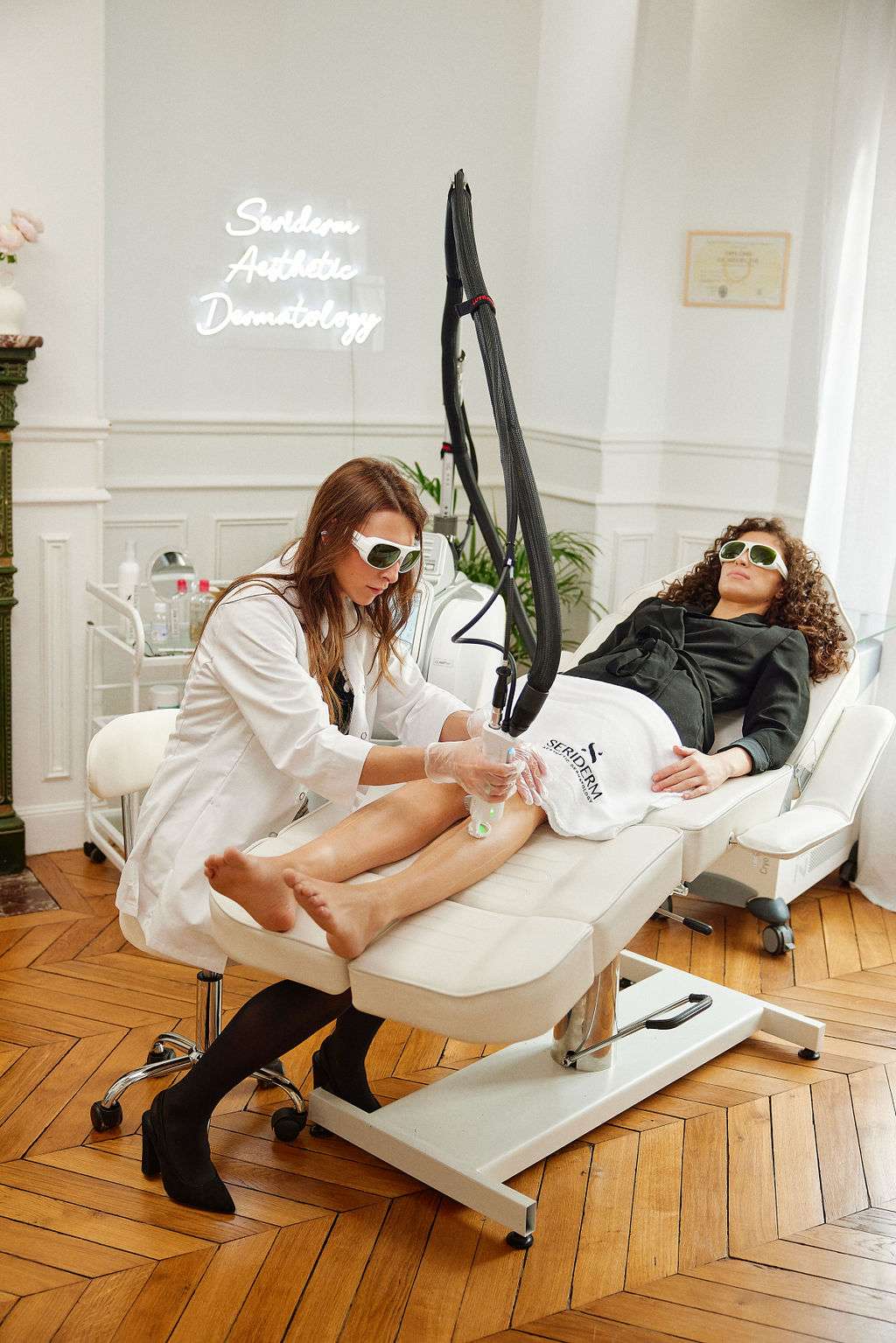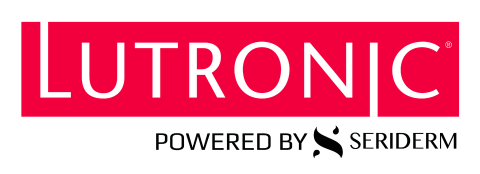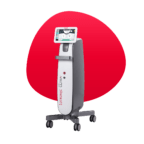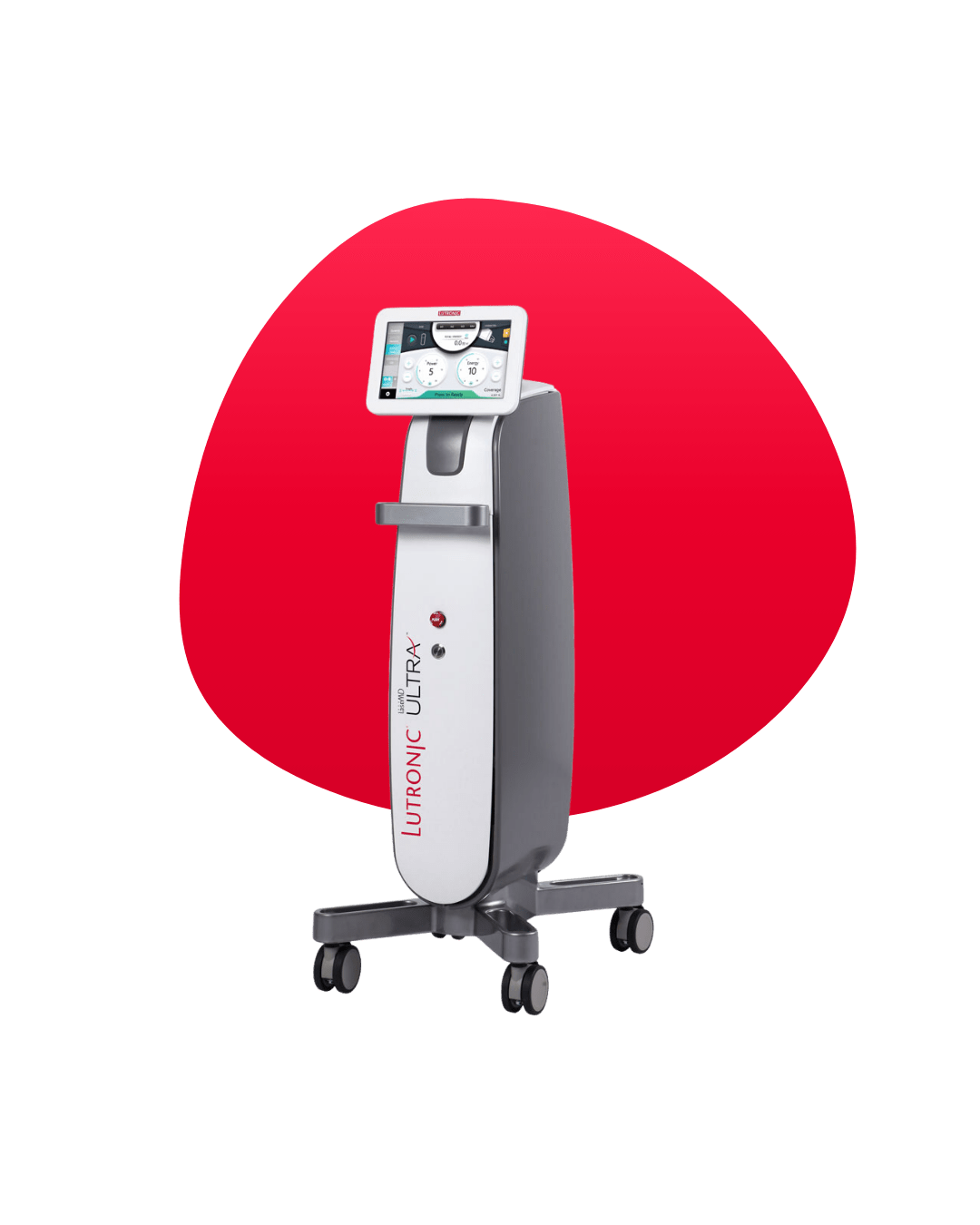
- Nawal MAATOUG
- Posted on
Combining the latest generation fractional laser with cosmeceutical ampoules, LaseMD Ultra is an exceptionally effective medical treatment for addressing pigmentation spots and lesions (such as melasma, heliodermatitis, lentigines), including those resistant to other laser treatments or peeling. It corrects signs of skin ageing, superficial skin irregularities (like chickenpox or acne scars), and restores the skin’s radiance.
A Treatment Merging Fractional Laser and Cosmeceuticals
What is LaseMD Ultra?
Offered by Lutronic Laboratories, LaseMD Ultra is an innovative medical laser that merges sub-ablative fractional laser technology with a cosmeceutical active ingredient application system in the form of cosmeceutical ampoules.
LaseMD Ultra is adept at treating pigmentation spots, enhancing skin texture, and diminishing signs of skin ageing.
The Fractional Laser Principle
The LaseMD Ultra laser is a non-ablative thulium laser with a wavelength of 1927 nm. Unlike traditional resurfacing lasers, it treats superficial skin lesions and irregularities through sub-ablative fractional technology.
The laser energy of LaseMD Ultra is delivered at the epidermal level to induce the formation of reservoirs by evaporating water through micro-channels in the stratum corneum. Creating micro-channels in the sub-dermal area stimulates the body’s synthesis of collagen, elastin fibres, and hyaluronic acid, thus enabling deep skin regeneration.
The Contribution of Active Ingredients in Cosmeceutical Ampoules
Following the fractional laser treatment, ampoules containing active ingredients are applied to the skin. These active ingredients, in the form of nanoparticles, penetrate the skin through the micro-channels created by the laser action. These micro-channels remain open for 8 to 48 hours to allow optimal penetration of the active ingredient.
The cosmeceutical ampoules are designed so that the size of the lysosomes carrying the cosmeceutical active product matches the size of the channels created by the LaseMD Ultra, hence the specific synergistic efficacy.
Four active ingredient ampoules can be used in a LaseMD Ultra treatment to customise the treatment and optimise the results obtained:
- Vitamin C: to brighten and enhance the skin
- Tranexamic Acid: to treat melasma, hyperpigmentation, and redness
- Retinol (Vitamin A): for anti-ageing action and treating active acne
- Resveratrol: for treating acne, oily skin, and excess sebum
In treatments performed in the clinic, Tranexamic Acid and Retinol ampoules are often favoured.
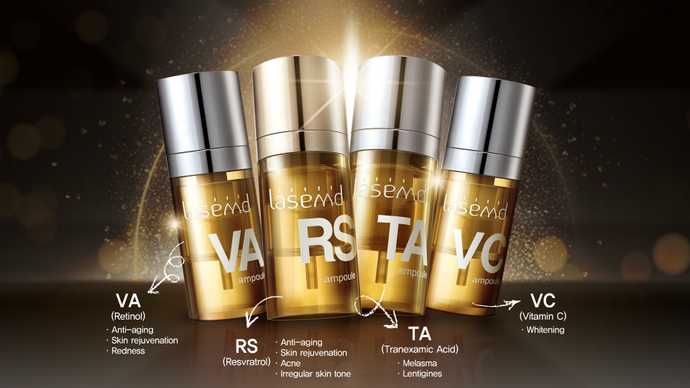
When to Opt for LaseMD Ultra?
LaseMD Ultra treatment is particularly indicated for correcting pigmentation spots and skin lesions such as melasma, sunspots (heliodermatitis), and for treating surface irregularities of the skin like acne scars, for example.
Thanks to its deep action and the supply of active ingredients provided by the cosmeceutical ampoules specifically adapted to the laser’s action, LaseMD Ultra also improves skin texture and corrects signs of skin ageing.
Indications for LaseMD Ultra
More specifically, LaseMD Ultra can be used to:
- Correct pigmentation spots and epidermal pigmentation lesions: lentigines, solar lentigos, age spots, freckles, melasma.
- Prevent and treat actinic keratosis (or solar keratosis), lesions caused by prolonged exposure to UV rays and ageing.
- Improve skin texture by eliminating roughness and reducing enlarged pores,
- Prevent skin ageing and correct fine lines,
- Treat heliodermatitis, including photodamage of the décolleté and back of the hands as well as the face.
- Diminish superficial scarring sequelae, notably acne or chickenpox scars,
- Restore the complexion’s radiance,
- Reduce the appearance of stretch marks.
On Which Parts of the Body Can LaseMD Ultra Be Used?
The LaseMD Ultra laser is particularly indicated for treating:
- The face
- The eye area (upper and lower eyelids)
- The lips and perioral area
- The neck and décolleté
- The back of the hands
This treatment can be used on all types of patients, regardless of their age, sex, or phototype (skin colour).
Procedure of a LaseMD Ultra Treatment
Before the Treatment
During a diagnostic facial consultation, your expectations and the condition of your skin will be assessed to determine which treatment or protocol is suited to your case.
If LaseMD Ultra matches the indications you wish to treat, the procedure and its aftermath will be explained to you in detail. The choice of cosmeceutical ampoule used in the treatment will be made based on your expectations and our recommendations.
How Does a LaseMD Ultra Session Proceed?
A LaseMD Ultra session lasts between 20 and 30 minutes on average. Several passes of the laser are performed to maximise the treatment’s efficacy and achieve a uniform result.
During the treatment, tingling and a sensation of warmth caused by the laser’s action are felt. It is not a painful treatment, but slight discomfort is experienced.
After applying the active ingredients, a cream or mask is applied to the treated area to soothe and moisturise the skin post-treatment.
After the Treatment
LaseMD Ultra is a non-invasive treatment with particularly mild after-effects. Slight redness may be observed on the treated area in the days following the treatment, but this can easily be concealed with makeup. For more aggressive treatments on scarring sequelae, to tighten eyelid skin, to treat fine lines, swelling, and fine marks may persist for 5 to 10 days.
Unlike previous generations of laser treatments, fractional lasers like LaseMD Ultra do not require social downtime. Daily activities can resume immediately after the session.
To optimise the treatment result, ampoules of the active ingredient used during the session will be provided for application at home in the morning and evening.
Results Obtained with LaseMD Ultra
The Result Immediately Visible?
As with other treatments using fractional laser technology, the result is not immediately visible after the session ends. Indeed, the principle of this type of treatment relies on stimulating the tissues to provoke skin regeneration.
The results thus appear gradually, over several weeks, as the body produces collagen, elastin, and hyaluronic acid, which will correct skin imperfections and rejuvenate the skin.
How Many Sessions Are Necessary?
While an improvement in skin quality begins to appear after a single session, several sessions are necessary to observe an optimal result.
The number of sessions to consider will be determined during a consultation based on your expectations, the condition of your skin, and the characteristics of the treated area. Generally, the treatment result will be optimal with a protocol comprising between 3 to 6 sessions spaced 2 to 4 weeks apart.
Optimising the Result with a Keybody-Skin® or Keybody-Skin Plus® Treatment
To optimise the results obtained with LaseMD Ultra, a combined approach to aesthetic skin treatments may be indicated.
Related Posts

LaseMD Ultra: The Revolution in Skin Care
